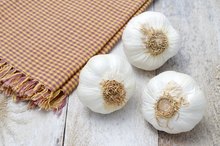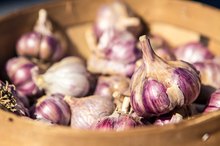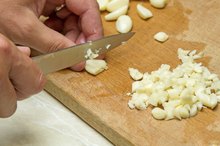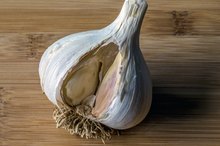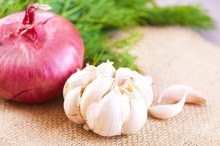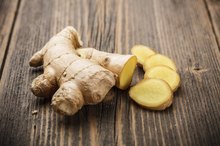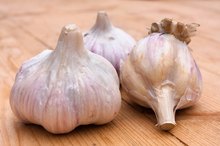Garlic for Herpes
Herpes refers to more than 90 different types of viruses that fall under the Herpes virdae family, according to Phyllis Balch, author of "Prescription for Nutritional Healing." Many types of herpes viruses do not affect humans 1. Herpes viruses most commonly cause cold sores, vaginal herpes, shingles and chickenpox in humans. Although there is no known cure for herpes infection, garlic may help reduce the frequency and severity of outbreaks.
If you are experiencing serious medical symptoms, seek emergency treatment immediately.
Check with your physician before using garlic to treat a herpes infection.
History
Garlic has been used for medicinal purposes for about 5,000 years -- the earliest known prescription for garlic was written in cuneiform on a clay tablet dating back to about 3000 B.C., according to Michael Castleman, author of "The New Healing Herbs." Egyptians regarded garlic as a remedy for fatigue, and ancient Greeks considered it a cure for leprosy 12. American and Russian physicians in the early 1900s discovered the antibacterial and antiviral properties of garlic and used it to prevent wound infection and dysentery.
Benefits
Garlic for Chest Congestion
Learn More
Garlic contains two primary chemical compounds: allinase and alliin. Although they offer no medicinal value on their own, they combine to form allicin, a chemical compound that may provide antiviral properties. Allicin might help destroy herpes virus cells, which might control outbreaks of cold sores, vaginal herpes or shingles, according to Balch. Garlic is also a rich source of vitamin C, which stimulates your body's production of interferon, a natural virus-fighting substance.
- Garlic contains two primary chemical compounds: allinase and alliin.
- Garlic is also a rich source of vitamin C, which stimulates your body's production of interferon, a natural virus-fighting substance.
Preparation
Alliin and allinase form allicin when you crush, dice, chop or slice fresh garlic cloves. Use one of these methods to prepare garlic before adding it to main entrees or side dishes, and let the prepared garlic sit for 10 to 15 minutes to activate allicin.
Risks
Allicin Garlic Side Effects
Learn More
Although the FDA considers garlic generally safe, it may cause skin rashes in rare cases. Also, the chemical compounds in garlic may thin your blood and prevent wound clotting. Avoid using garlic as a herpes treatment if you take blood-thinning medications, or if you have a malabsorption disorder that causes vitamin K deficiency.
Related Articles
References
- "Prescription for Nutritional Healing"; Phyllis Balch; 2010
- "The Healing Herbs"; Michael Castleman; 2010
- Garlic. Penn State Hershey. Milton. S. Hershey Medical Center.
- Garlic. Therapeutic Research Center. Natural Medicines Database.
- Garlic. National Institutes of Health National Center for Complementary and Integrative Health.
- Garlic. Memorial Sloan Kettering Cancer Center. About Herbs, Botanicals, and Other Products.
- Bayan L, Koulivand PH, Gorji A. Garlic: a review of potential therapeutic effects. Avicenna J Phytomed. 2014;4(1):1-14.
- Garlic. National Center for Complementary and Integrative Health
- Garlic. Penn State Hershey. Milton. S. Hershey Medical Center.
- Garlic. Herbal Safety. UT El Paso / Austin Cooperative Pharmacy Program & Paso del Norte Health Foundation.
- Garlic. Therapeutic Research Center. Natural Medicines Database.
- Garlic. National Institutes of Health National Center for Complementary and Integrative Health.
- Garlic. Memorial Sloan Kettering Cancer Center. About Herbs, Botanicals, and Other Products.
- Garlic. Michigan Medicine. University of Michigan.
Writer Bio
Owen Pearson is a freelance writer who began writing professionally in 2001, focusing on nutritional and health topics. After selling abstract art online for five years, Pearson published a nonfiction book detailing the process of building a successful online art business. Pearson obtained a bachelor's degree in art from the University of Rio Grande in 1997.
